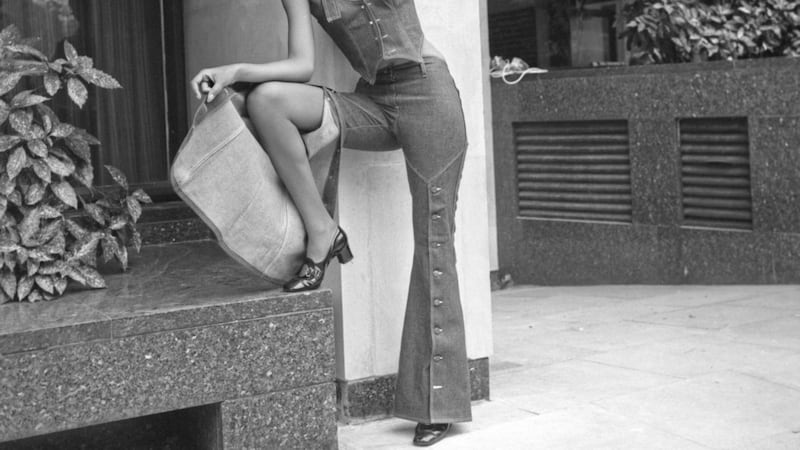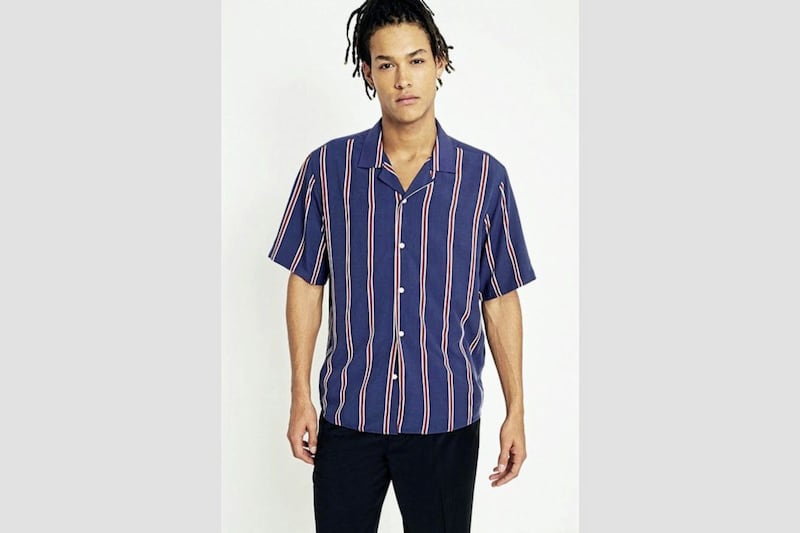ORIGINALLY the preserve of labourers, then rebellious teenagers, denim has scaled the heights of the fashion world and is now regularly seen in designer collections and on the catwalks.
This season, Stella McCartney made the case for slouchy, big-pocket jeans, while Carolina Herrera – a designer known for her evening ensembles – crafted a sexy thigh-slit skirt and even a corseted gown from the blue stuff. But how did this tough textile become so loved? We trace the history of denim from its humble beginnings...
PRE-17TH CENTURY: A fabric called 'serge de Nimes', made of silk and wool, is produced in England and France. It appears the word denim was derived from this term, but it's unclear how the cotton fabric we now know as denim got its name. Around the same time, a similarly hardy textile called 'jean', named after Genoa in Italy, is imported and eventually produced in England.
1789: President George Washington tours a mill in Massachusetts that weaves both denim and jean fabrics. In the same year, the word denim appears in print for the first time when a Rhode Island newspaper reports on local textile production.
1860s: Denim is defined in Webster's dictionary as "a coarse cotton drilling used for overalls, etc", but its use is reserved for working men. Advertisements show labourers, mechanics and painters wearing overalls and trousers made of jean.
1873: When Jacob Davis, a tailor in Reno, Nevada, is asked to make a robust pair of trousers for a local woodcutter, he decides to reinforce the rivets on the design. The pants prove extremely popular, but Davis can't afford to patent the idea, so he writes to his fabric supplier, Levi Strauss, for help. 'Waist overalls', as early Levi's were called, were made in 'cotton duck' fabric and denim.
1908: Levi jeans are a great success, but the patent expires, allowing other players to enter the market. An ad for Lee's 'cowboy pants' plays on denim's rugged Mid-West rancher associations.
1920s: Middle-class Americans from the east coast holiday on dude ranches in California and the Mid-West, bringing home jean garments and boosting their popularity.
1950s: Jeans start to appeal to youngsters after they're worn by Marlon Brando and James Dean on the silver screen, capturing the post-war counter-culture spirit. They were later banned in American schools, which only serves to fuel demand.
1960s: Denim goes global, returning to the continent from which it originated and gaining popularity in Asia after American GIs took jeans overseas during the Second World War.
1973: Sales continue to rise as straight-leg jeans make way for trendy flares, but later in the decade, demand for denim fades.
1980s: The drainpipe, a precursor to the skinny jean, is the shape of choice and designer brands enter the fray, charging hundreds of pounds for jeans emblazoned with their logos.
1994: Baggy jeans become a hit with musicians and fans alike on the burgeoning hip-hop scene.
2001: Denim seemed to appear everywhere in pop music – everyone from Liam Gallagher to Britney Spears and Justin Timberlake were sporting it.
2009: The recession hits the designer jeans market hard. "Charging $600 for jeans for no reason at all – those days are over," says Levi's senior vice president of women's merchandising and design.
2017: The SS17 designer collections are filled with high-end denim, once more. Carolina Herrera even sent an all-denim, strapless, corseted gown down the runway at New York Fashion Week, while on the high street, embroidered and patched jeans and jackets have made a comeback.






